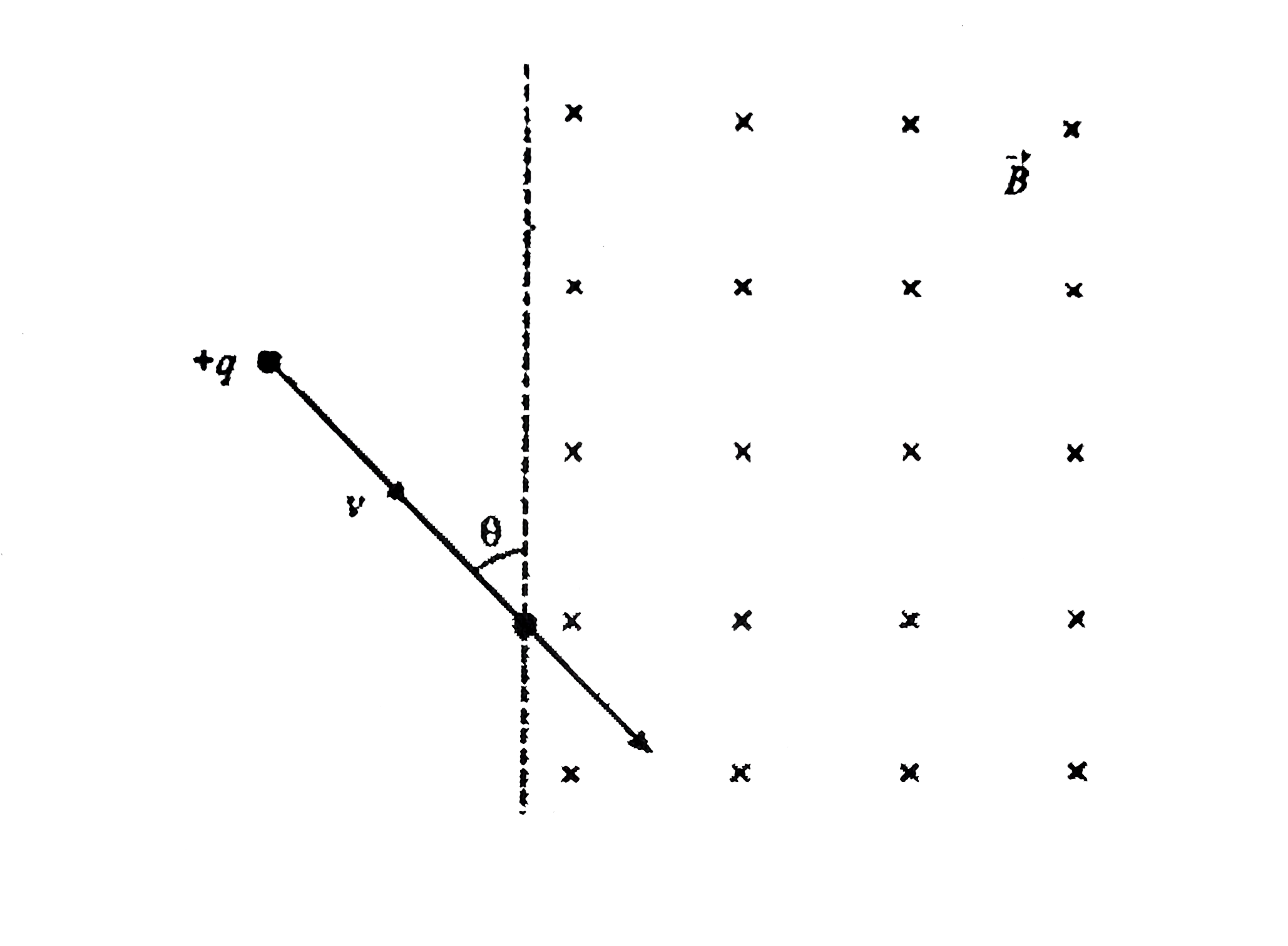A mass spectrometer separates ions according to their ratio of charge to mass. Such devices are widely used in silence and engineering to analyze unknown mixtures and to separate isotopes of chemical elements. Figure 1.24 shows ions of charge q and mass m first being accelerated from rest through a potential difference V and then entering a region of uniform magnetic field B pointing out of the page. Only the magnetic force acts on the ions in this region, so they undergo circular motion and, after half an orbit, land on a detector. Find an expression for the horizontal distancexxfrom the entrance slit to the point where an ion lands on the detector.

This problem is about charged particle undergoing circular motion in a uniform magnetic field. The distance we are asked for is the diameter of the particle's circular path.
Equation, r=mv/qB, shows that the path radius depends on the field and on the particle's mass, change and speed. We know everything but the speed, so this becomes a two-step problem in which we will first find the speed, We are given the potential difference -energy per unit charge-so we can use energy conservation to find the kinetic energy and hence the ion's speed in the magnetic field region, Then we will use equation to find the radius of the ion's circular path.
A charge q gains kinetic energy qV in ''faling'' through a potential difference V, so an ion's kinetic energy once it enters the magnetic field is
12mv2=qV
Solving for v gives v=√2qV/m.
Our answer, the path diameter x, is then twice the radius gives in equation.
x=2r=2mvqB=2m√2qV/mqB=2B√2mvq.
Topper's Solved these Questions
- BOOK - CENGAGE PHYSICSCHAPTER - MAGNETIC FIELD AND MAGNETIC FORCESEXERCISE - Solved Example25videos
MAGNETIC FIELD AND MAGNETIC FORCES
- BOOK - CENGAGE PHYSICSCHAPTER - MAGNETIC FIELD AND MAGNETIC FORCESEXERCISE - Exercise 1.122videos
MAGNETIC FIELD AND MAGNETIC FORCES
- BOOK - CENGAGE PHYSICSCHAPTER - KINETIC THEORYEXERCISE - Question Bank31videos
KINETIC THEORY
- BOOK - CENGAGE PHYSICSCHAPTER - Magnetism and MatterEXERCISE - Question Bank50videos
Magnetism and Matter
Similar Questions
A charge particle of mass m and charge q is accelerated by a potential difference V volt. It enters in a region of uniform magnetic field Bas shown in figure-4.93. Find the time after which it will come out from the magnetic field.
 View Solution
View SolutionAn electron of mass m and charge e is accelerated from rest through a potential difference V in vacuum. The final speed of the electron will be
View Solution
Knowledge Check
- Question 1 - Select One
An electron of charge e and mass m is accelerated from rest by a potential difference V. the de Broglie wavelength is
ADirectly proportional to the square root of potential difference.BInversely proportional to the square root of potential difference.CDirectly proportional to the square root of electron massDInversely proportional of the cube root of electron mass - Question 2 - Select One
A particle of mass m and charge q travels from rest through a potential difference V. Its final energy is
Aq VBmq VCq V/mDmq/V - Question 3 - Select One
An ion of charge + g and mass m is accelerated in a region of potential difference V volts and then it enters a region of uniform magnetic field B perpendicular to its velocity. If the ion describes a semicircle of diameter x, then its mass m is
Am=Bq2x28VBm=B2qx28VCm=B2qx8VDm=B2q2x28V
A particle of mass 'm' and charge 'q' is accelerated through a potential difference of V volt, its energy will be
View SolutionA particle of mass 'm' and charge 'q' is accelerated through a potential difference of V volt, its energy will be
View SolutionThe mass of an electron is m, charge is e and it is accelerated from rest through a potential difference of V volts. The velocity acquired by electron will be
View SolutionA particle of charges Q and mass m travels through a potential difference V from rest. The final momentum of the particle is
View SolutionAn electron of mass 'm' is accelerated through a potential difference of V and then it enters a magnetic field of inductionB. Normal to the lines of force. Then the radius of the circular path is
View Solution

